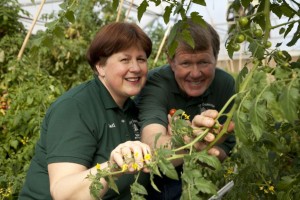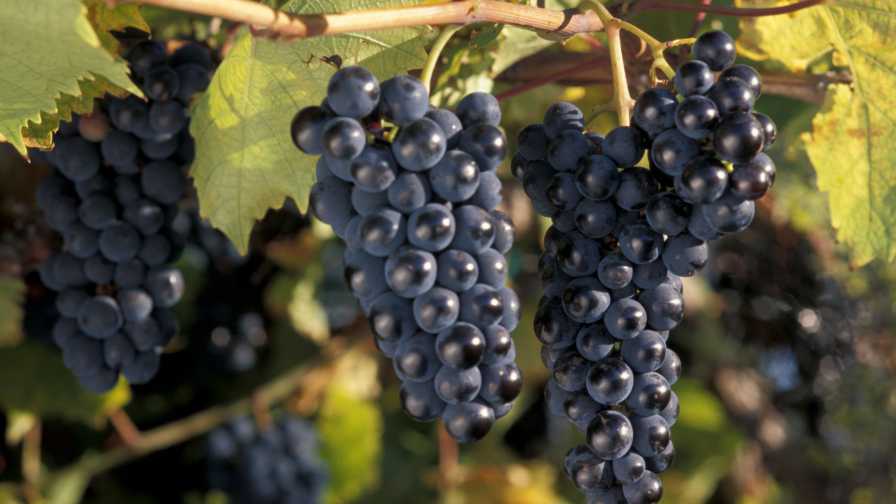Growing Vegetables In Winter Is A Competitive Advantage For Four Seasons Greenhouses

Gail and Vic Vanik
One of the main drawbacks of the locally grown trend is the off season. Restaurants and other venues want to be able to tout all their ingredients are sourced within the region, but when winter hits, that’s a tough proposition. And that’s why Four Seasons Greenhouses’ vegetables are as profitable as they are.
Vic Vanik, who co owns Four Seasons with his wife, Gail, grows only during the off season. The Vaniks operate a retail garden store in Delores, CO, which is a small town southwest of the popular ski resort Telluride, not far from the Four Corners. Four Seasons growing division is just a half acre, all within a greenhouse.
The garden shop had a hard time drawing customers when temperatures fell below freezing, and that was even more true when the area’s fairly regular dips below zero occur. So they decided to get back into growing during the winter months, this time focusing solely vegetables. In 2011, the couple began growing sunflower greens for their own personal diets, when Vik had a health scare with high cholesterol. They found customers really wanted to buy greens from them as well.
Through their involvement with various associations in Colorado and long term friendships, the couple already knew most local growers, and learned that many of them also grow winter vegetables, but not enough to supply the demand over the winter.
Soon after, three things happened. The couple opened Four Seasons Market, a winter-season farmers market; Vik co-founded a farmer/grower coop to supply local venues; and the Vaniks became a serious vegetable grower and supplier in the winter months. And those sunflower greens that got everything started? They’re grown year-round and are sold in local grocery stores.

Vic Vanik offers a farmers’ point of view of how to supply local restaurants, grocery stores, and schools. Click the image to learn more!
Why The Winter Months?
The reason why they favor the winter months is simple: better profit.
“It doesn’t help us to be the low bidder. By supplying vegetables during the off season, I make a lot more margin,” Vik says.
The garden center is a highly profitable operation, although its relatively small, bring in less than a $1 million each year. But, like most garden stores, they operated in the red during the off season.
Although growing vegetables was a practical choice to boost sales during the off season, it has turned into a major advantage for the Vaniks when negotiating prices. There are only a few others growing fruit and vegetables during winter, so demand is significantly outpacing supply.
One example of how supplying in winter months has boosted prices for them is in how they sell to schools. A few years ago, Four Seasons provided a bid and signed a contract to local schools. The wholesale price was difficult to sustain that first year, so the next year, the Vaniks switched to supplying schools as needed during the winter. They found they could sell their vegetables at a much more reasonable price.
“Tomatoes sell for $2 a pound to schools in August and September,” Vik says. “However, a couple years ago, I called the school people and said, ‘I’ve got 90 pounds of tomatoes. Do you want them? I have a good supply at $3.50.'”
Vanik says prices will go up to $4.50 to $5 when they’re not as plentiful.
“Schools, in general, as they’re buying from CISCO, and they’re paying $2 a pound,” Vanik says. “They’re federally funded, so they have to watch the pennies. This week, I emailed my local school, I have cherry tomatoes and lettuce and here’s my price. I sold the lettuce at $6 a pound.”
Not all schools will be so generous, Vanik says.
“It depends on how committed it is to local food,” he says.
To command those prices, though, Vanik says the produce has to be high quality. “I had a school two years ago who asked, ‘What’s wrong your lettuce? It’s lasting too long.’ That’s the difference between lettuce is cut two hours before you get it and the two weeks that’s fairly common for large distributors.”
As for restaurants, Telluride is packed with high end restaurants and want local produce during the high season for them.
“I’m selling virtually all I can produce during snow season,” Vanik says.
The higher prices Vanik is able to command isn’t just about supply and demand, however. His costs are also high.
“I’m not trying to rip people off, but I’d like to make a profit,” he says. “Because of the timing of the year, it takes money to heat in the winter, so you have to cover costs.”
Those extra costs are offset, somewhat, but being able to keep their garden retail employees on throughout the year.
“It keeps us open.”
Although their vegetables are grown during a much shorter time frame than their ornamental plants, vegetable sales almost tied for first place in categories sold. It trailed annual flowers by just $800 — and annuals are always the top seller at a garden store.









